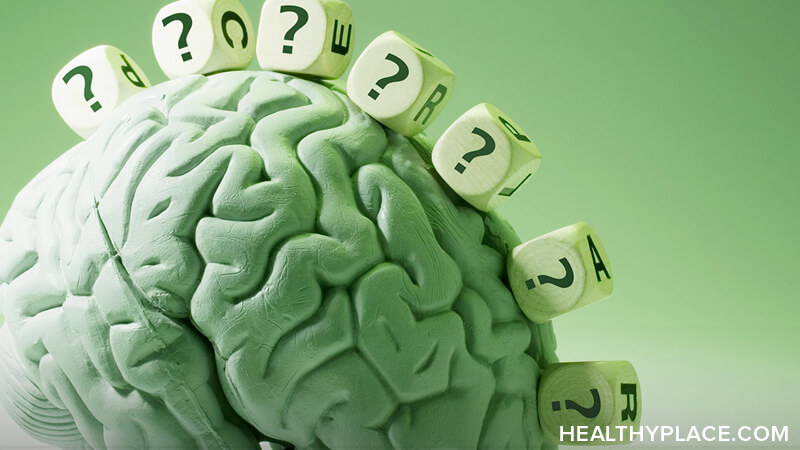5 Different Types of Mental Illness

The definition of mental illness is broad, and there are different types of mental illness. The Diagnostic and Statistical Manual of Mental Disorders, Fifth Edition (DSM-5), the wellspring of official information about different types of mental illness, defines five different types of mental illness to help people better understand what mental illness is, what it does, and how it affects human beings (American Psychiatric Association, 2013).
Many different professionals and organizations categorize mental illness in a way that makes sense to them for their research or practice. While not incorrect, such categories aren't always the official ones chosen by the APA in the DSM-5.
5 Different Types of Mental Illness in DSM-5
Upon analyzing all 20 disorder groups (or chapters in the DSM-5) and nearly 300 specific disorders, certain patterns and features of mental disorders become evident. Remarkably, the DSM-5 categorizes everything into five different types of mental illness (List of Mental Illnesses).
These five different types of mental illness are clusters of disorders based on their nature as well as developmental and lifespan considerations. This organization helps increase understanding of what these mental disorders are like, what they do to people, and when in the lifespan they are likely to occur.
List of Different Types of Mental Health Disorders
These five categories in the DSM-5 list the different mental disorders and their challenges:
- neurodevelopmental disorders
- internalizing disorders
- externalizing disorders
- neurocognitive disorders
- other disorders
Neurodevelopmental disorders are brain/nervous system disorders. The onset of these is during the early stages of development.
Internalizing and externalizing disorders have to do with the nature of how they manifest. Internalizing disorders primarily present themselves internally; symptoms are turned inward within the person. In contrast, externalizing disorders are mainly external, with behaviors turned outward toward the world.
Neurocognitive disorders are disorders/diseases of the brain that contribute to decline in cognitive functioning and processing.
Other disorders are just that—other conditions that, despite causing significant disruption and dysfunction, don't quite meet necessary diagnostic criteria for a specific mental illness such as a mood or anxiety disorder.
Examples of Different Types of Mental Illness
Here's a glance at how just some of the most common disorders fit into four of the five different types of mental illness:
Neurodevelopmental disorders
- autism spectrum disorder
- attention-deficit / hyperactivity disorder (While this might logically seem like an externalizing disorder, it's actually a neurodevelopmental one because of the nature of the brain disorder and the onset early in the developmental process. This distinction impacts how ADHD is treated.)
- schizophrenia and other psychotic disorders (There is some professional disagreement of the nature of schizophrenia and psychotic disorders. Many professionals have traditionally viewed and continue to view psychotic disorders as neurodevelopmental because of the nature of the brain dysfunction.)
Internalizing disorders
- major depressive disorder
- anxiety disorders
- somatic symptoms of various disorders; also called psychosomatic, these relate to bodily/physical symptoms of a mental illness
Externalizing disorders
Neurocognitive disorders
- delirium
- major or mild neurocognitive disorders due to such diseases as Alzheimer's disease, Parkinson's disease, Huntington's disease, HIV, and more
- major or mild neurocognitive disorders due to traumatic brain injury (TBI)
Why 5 Different Types of Mental Illness?
Does it really matter that there are five different types of mental illness categorized in the DSM-5? After all, the DSM-5's main classification of mental illness is through 20 different chapters, each with multiple related disorders. Is that not enough?
Perhaps it could be enough. It is the diagnostic chapters and the criteria of each illness within the chapters that is the primary tool used by mental health professionals as they help people treat and manage mental illness.
It could be enough to just have the main diagnostic chapters. Yet it isn't, quite. The DSM-5 thinks in terms of these five categories in order to promote future research and better conceptualize what various mental disorders are and how best to treat them. Knowing not just the symptoms of an illness but the origin and nature help to treat the whole person rather than putting a bandage on the symptoms. The five types of mental illness are a useful research and treatment tool.
APA Reference
Peterson, T.
(2019, October 28). 5 Different Types of Mental Illness, HealthyPlace. Retrieved
on 2026, January 1 from https://www.healthyplace.com/other-info/mental-illness-overview/5-different-types-of-mental-illness



